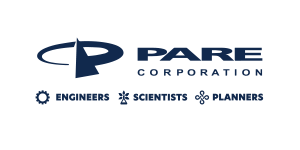Resource
Physical Modeling to Evaluate Spillway Performance for the Modern-Day PMF
Gilboa Dam located in the Catskill Mountain region of Upstate New York supplies over 20 percent of New York City’s water supply. Constructed from 1919 to 1927, the dam consists of a 1,324-foot-long concrete spillway and 700-foot-long earthfill embankment. Further details of the spillway include a broad-crested weir atop a 160-foot-maximum-height overflow structure with 19 to 20-foot-high stair-steps discharging into a steeply sloping side channel and plunge pool area before exiting into the natural creek channel downstream. Interestingly, a fair amount of record information was available regarding the original 1917 design for this facility; including a technical paper published in 1922 in an American Society of Civil Engineers’ Journal discussing physical model studies performed in 1919-20 to refine the spillway geometry. Amazingly, the dam’s original designers built-in enough conservatism such that the spillway still had adequate hydraulic capacity to safely discharge the probable maximum flood (PMF) using modern-day hydrologic analysis methods. However, given that the overflow structure’s original stair-step configuration was based on a maximum head that was less than one-third of that estimated for the updated PMF, further analysis was necessary to evaluate overall spillway performance within the stair-steps and the side channel for the higher newly estimated discharge flow. As was recognized earlier by the original designers, given the spillway’s complexities, physical modeling as opposed to numerical analysis was the best option for this more detailed evaluation. This paper presents the issues encountered by the original designers during the 1919-20 model studies as well as the approach and results for the recent physical model studies. The benefits provided by the recent physical modeling included a more accurate representation of the original and proposed spillway’s discharge rating curve, a means to improve flow aeration at the crest, and the use of gradually varying stair-step heights to handle a relatively wide-range of discharge flows. 24 pp, 17 figures, 2 tables, 8 references.
































